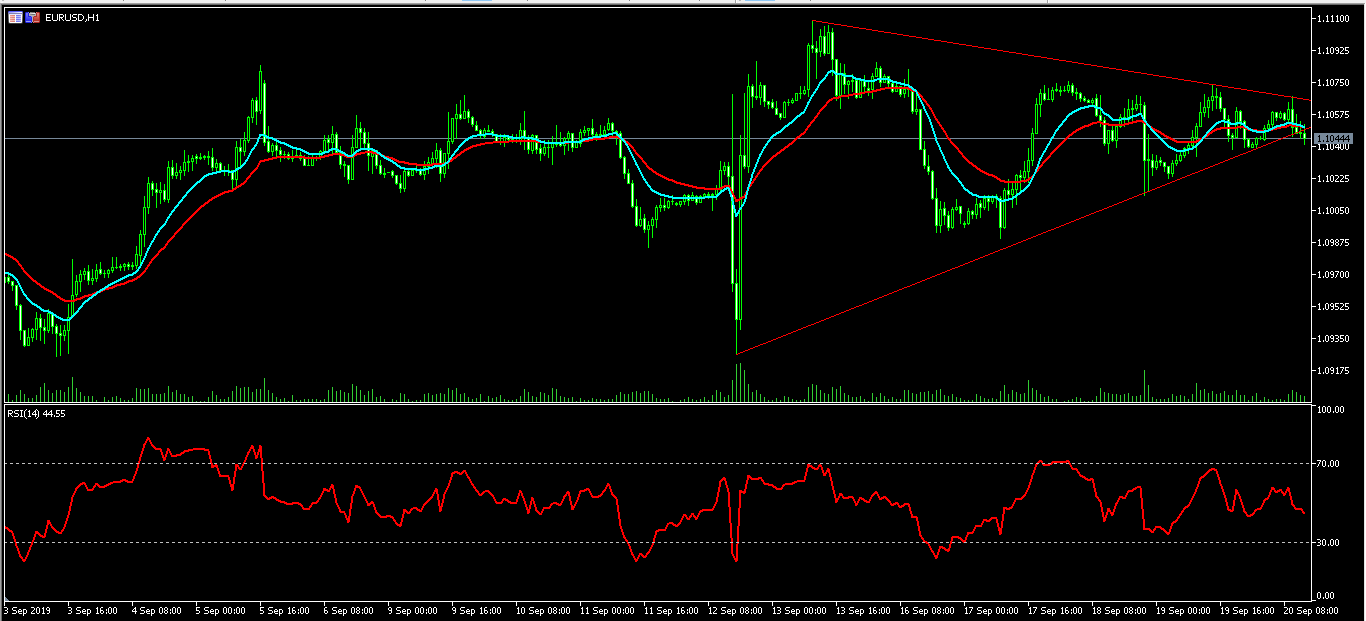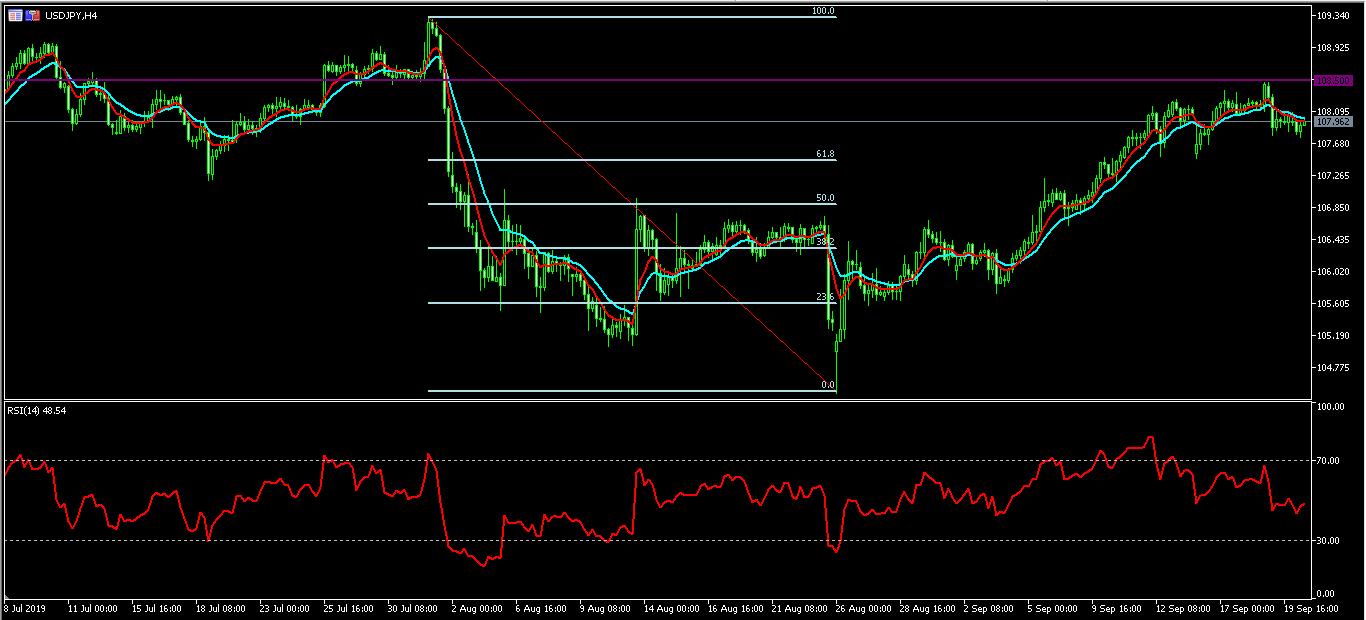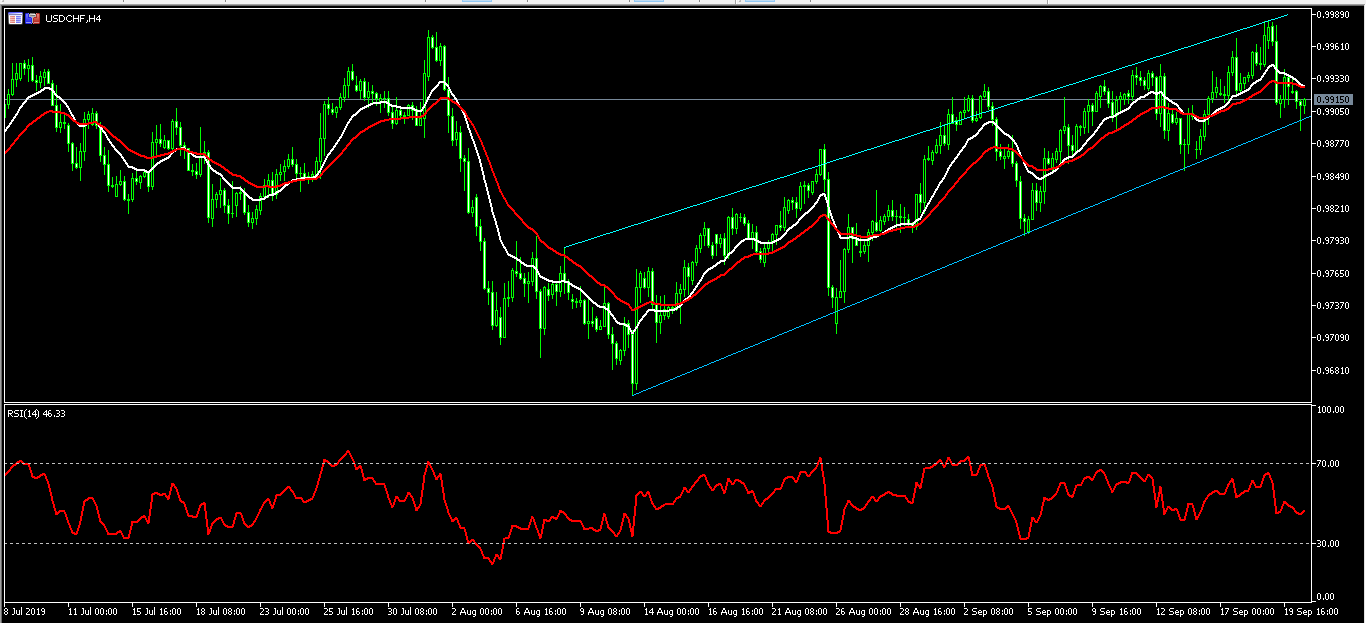The euro declined slightly today as more signs of weakening of the European Union economy emerged. Data released by the German statistics office showed that producer prices rose by 0.3% in August. This was a significant decline from July’s 1.1% and the consensus estimates of 0.6%. On a MoM basis, the PPI declined by -0.5% in the month after rising by 0.1% in July. The PPI is an important number because it is a leading indicator of inflation. In recent months, data from Germany has been relatively weak, which has led to speculation that the economy will slide into a recession. There are several reasons for the current weakness. First, the auto industry appears to have reached a peak. Second, the global trade war has affected the German manufacturing sector by making inputs more expensive. Third, Brexit has been a major drag for the economy as well.
The Japanese yen rose today even after weaker-than-expected CPI data. The national CPI rose by just 0.3% in August after rising by 0.5% in July. Traders were expecting the number to rise by 0.6%. On a YoY basis, the national CPI increased by 0.5%, which was slightly lower than the previous increase of 0.6%. This number came a day after the Bank of Japan signaled that it will intervene and likely lower interest rates in October. The Japanese economy has been a good example that the so-called Philips Curve does not always work. The principle of the curve says that inflation tends to rise with falling unemployment rate. This has not happened given that the Japanese economy is currently at full employment. Part of Japan’s population is aging, which leads to lower rate of consumption.
Global stocks were generally positive after the latest action by the People’s Bank of China (PBOC). The bank lowered interest rates by 25 basis points to 4.20%. The central bank has been on a rate easing cycle for the past few years. The bank has also taken action to support the economy by flooding the economy with money. These actions have contributed to the criticism of the Fed by Donald Trump who argues that it is not cutting rates fast enough. The Chinese rate cut came less than two days after the Federal Reserve slashed interest rates by 25 basis points. Meanwhile, data from Canada showed that retail sales in July increased by 0.4% after declining by -0.1% in June. The core retail sales, which excludes the volatile food and energy products declined by -0.1% after rising by 0.9% in the previous month.
EUR/USD
The EUR/USD pair declined slightly after the weak data from Europe. The pair is now trading at 1.1042, which is slightly below the lower line of the symmetrical triangle pattern shown below. The price is also slightly below the 14-day and 28-day moving averages while the RSI has moved slightly lower. It is now at 42. However, the volume remains relatively lower, which means that while the pair might continue moving lower, traders should be cautious about a false breakout.
USD/JPY
The USD/JPY pair declined slightly as traders reacted to the weak inflation numbers from Japan. The pair is currently trading at 107.97, which is slightly below the weekly high of 108.50. On the four-hour chart, the pair’s 14-day and 7-day moving averages appear to be crossing over in a bearish manner. The RSI too has been on a downward trend from a high of 83 to the current 43. While the downward trend could continue, the pair will likely move down slightly to test the 61.8% Fibonacci Retracement level of 107.48.
USD/CHF
The USD/CHF pair declined to retest the important support level shown in red below. The pair is now trading at 0.9914, which is slightly above this support. As shown on the four-hour chart below, the pair has been bouncing along this channel since August 14. This price is also below the 14-day and 7-day moving averages while the RSI has fallen to 46. The pair will likely move up to retest the resistance of 0.9980.
General Risk Warning for FX & CFD Trading. FX & CFDs are leveraged products. Trading in FX & CFDs related to foreign exchange, commodities, financial indices and other underlying variables, carry a high level of risk and can result in the loss of all of your investment. As such, FX & CFDs may not be appropriate for all investors. You should not invest money that you cannot afford to lose. Before deciding to trade, you should become aware of all the risks associated with FX & CFD trading, and seek advice from an independent and suitably licensed financial advisor. Under no circumstances shall we have any liability to any person or entity for (a) any loss or damage in whole or part caused by, resulting from, or relating to any transactions related to FX or CFDs or (b) any direct, indirect, special, consequential or incidental damages whatsoever.
Recommended Content
Editors’ Picks

EUR/USD consolidates weekly gains above 1.1150
EUR/USD moves up and down in a narrow channel slightly above 1.1150 on Friday. In the absence of high-tier macroeconomic data releases, comments from central bank officials and the risk mood could drive the pair's action heading into the weekend.

GBP/USD stabilizes near 1.3300, looks to post strong weekly gains
GBP/USD trades modestly higher on the day near 1.3300, supported by the upbeat UK Retail Sales data for August. The pair remains on track to end the week, which featured Fed and BoE policy decisions, with strong gains.

Gold extends rally to new record-high above $2,610
Gold (XAU/USD) preserves its bullish momentum and trades at a new all-time high above $2,610 on Friday. Heightened expectations that global central banks will follow the Fed in easing policy and slashing rates lift XAU/USD.

Week ahead – SNB to cut again, RBA to stand pat, PCE inflation also on tap
SNB is expected to ease for third time; might cut by 50bps. RBA to hold rates but could turn less hawkish as CPI falls. After inaugural Fed cut, attention turns to PCE inflation.

Bank of Japan set to keep rates on hold after July’s hike shocked markets
The Bank of Japan is expected to keep its short-term interest rate target between 0.15% and 0.25% on Friday, following the conclusion of its two-day monetary policy review. The decision is set to be announced during the early Asian session.

Moneta Markets review 2024: All you need to know
VERIFIED In this review, the FXStreet team provides an independent and thorough analysis based on direct testing and real experiences with Moneta Markets – an excellent broker for novice to intermediate forex traders who want to broaden their knowledge base.


